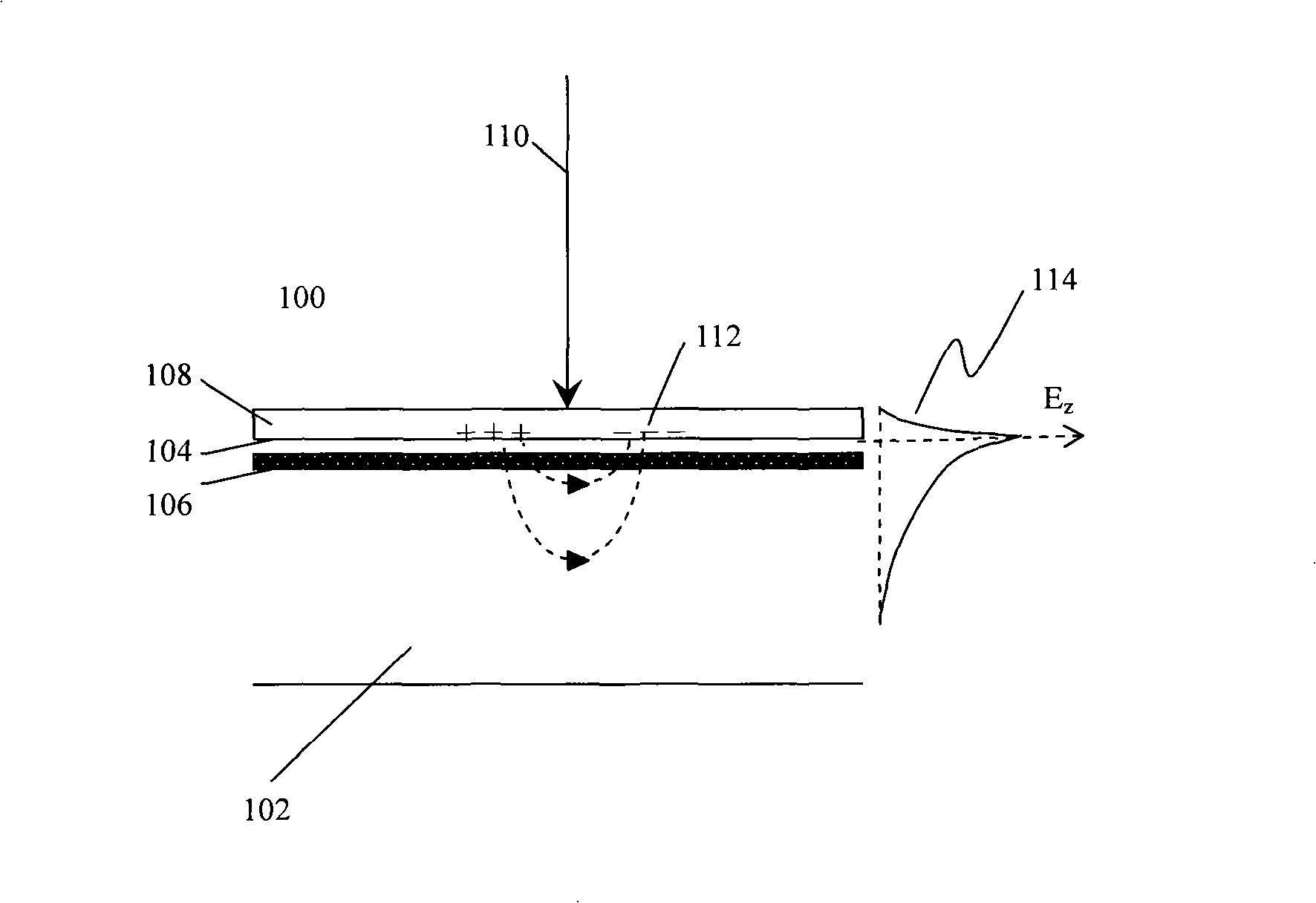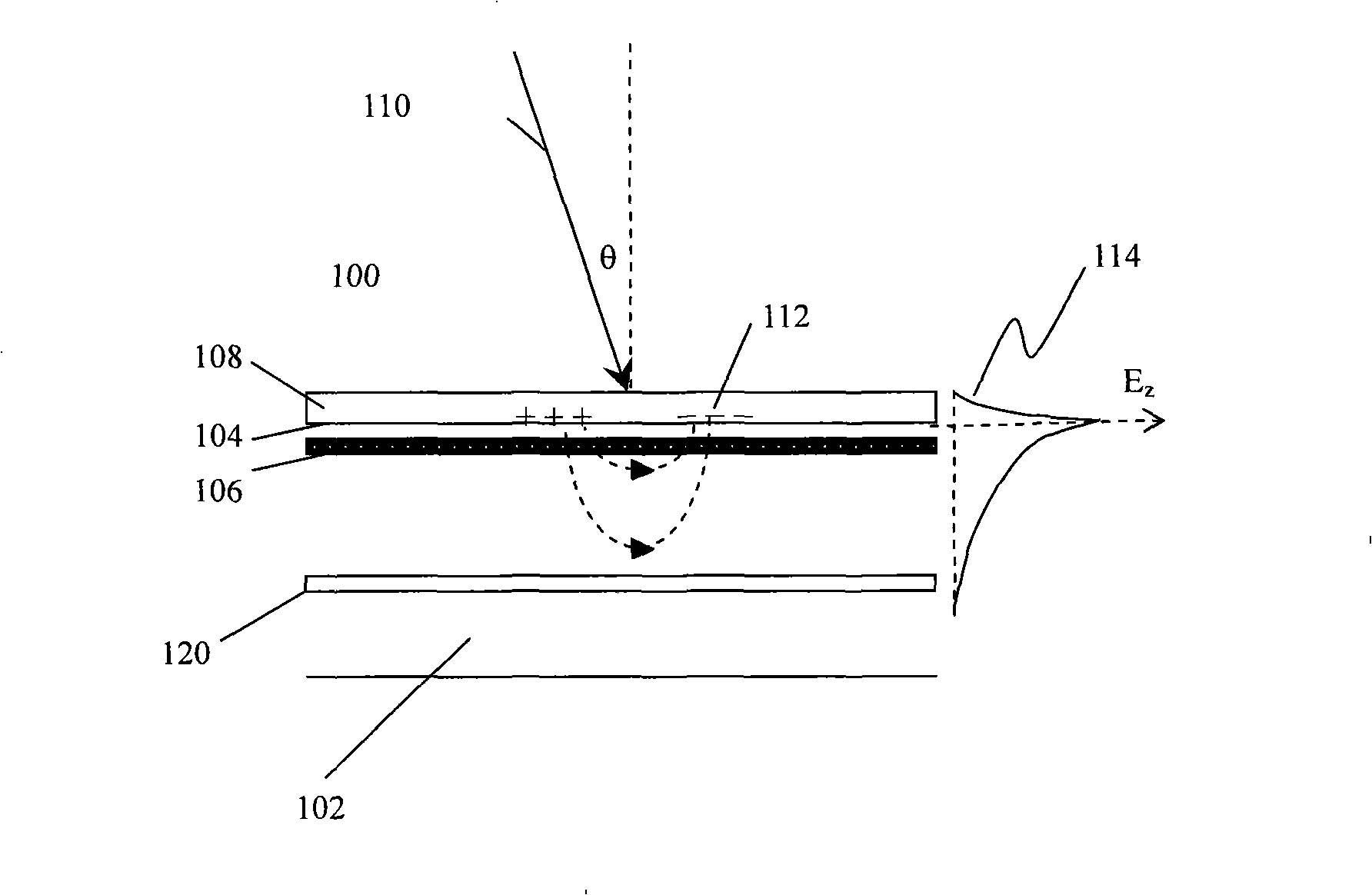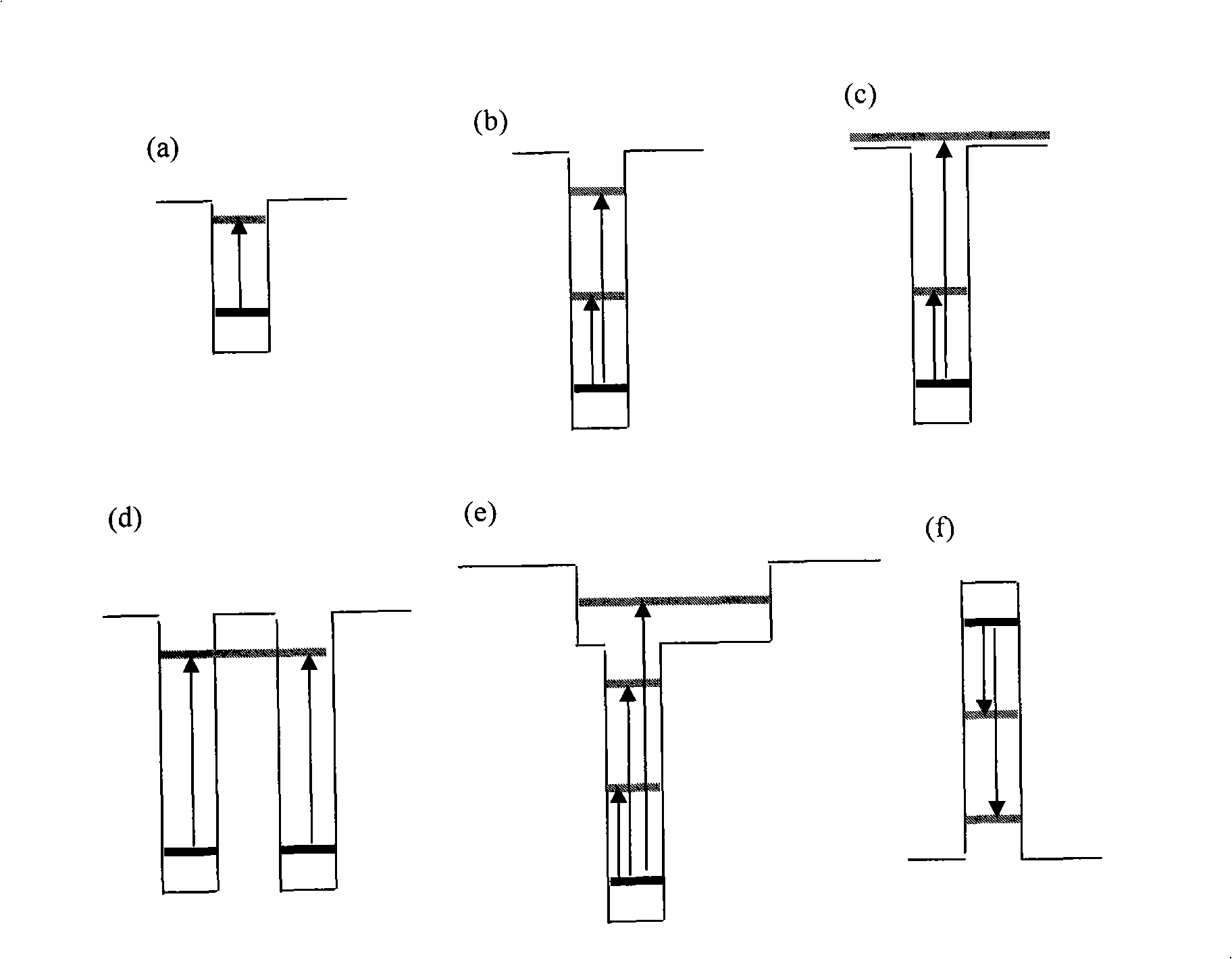Semiconductor quantum well photon detecting element
A photon detector, photon detection technology, applied in semiconductor devices, electrical components, circuits, etc., can solve problems such as inability, difficulty in matching the semiconductor characteristic frequency and surface plasmon mode, and wide-ranging adjustment
- Summary
- Abstract
- Description
- Claims
- Application Information
AI Technical Summary
Problems solved by technology
Method used
Image
Examples
Embodiment 1
[0039] like figure 1 As shown, the quantum well photon detection device 100 includes: a semiconductor GaAs layer 102, which has an InGaAs / GaAs quantum well layer 106 near the surface 104 on one side of the semiconductor layer 102; and a metal Au sub-wavelength period on the semiconductor surface 104 Sexual Structures 108, see Figure 4 a. The incident light wave 110 is incident from the direction perpendicular to the semiconductor surface 104 and the quantum well layer 106 and is finally absorbed by the quantum well layer 106, generating a surface plasmon wave 102, whose vertical direction electric field component E z As shown in 114. E. z Excite subband transitions in quantum wells (see image 3 a) The energy is absorbed by the quantum well to complete the photon detection process.
Embodiment 2
[0041] like figure 2 shown in figure 1 A heavily doped Si layer or Bragg mirror layer 120 is introduced on the basis of the structure. The incident light wave 110 is incident at an angle θ away from the normal direction. Also in the metallic Au subwavelength periodic structure ( Figure 4 b) The surface plasmon wave is excited, and its energy is partially absorbed by the quantum well layer; the transmitted part is reflected by the heavily doped layer or the Bragg reflection layer and then again the quantum well layer, so that the energy is absorbed by the quantum well layer with high efficiency .
Embodiment 3
[0043] like Figure 6 shown, using Figure 5 In the metal microhole array structure, the period is 4.5 microns, the side length of the microholes is about 2 microns, the material is Au, and the thickness is 100 nanometers. The detector structure is formed on the quantum well material ( Figure 6 a). The quantum well material structure includes: GaAs substrate layer, epitaxial buffer layer, double quantum well layer (the thickness of the upper quantum well layer is 10 nanometers, which is the photodetection layer; the lower layer is 50 nanometers, which is the channel layer; the double quantum well layer uses a graded composition Barrier layer), AlGaAs barrier layer and appropriate doping, GaAs cap layer. Then through a certain process technology to form Figure 6 In the device structure shown in (a), AuGeNi is used as the source and drain contact material to form an ohmic contact through proper processing. The metal microhole array structure 108 is coupled with the quantu...
PUM
| Property | Measurement | Unit |
|---|---|---|
| Thickness | aaaaa | aaaaa |
| Thickness | aaaaa | aaaaa |
Abstract
Description
Claims
Application Information
 Login to View More
Login to View More - Generate Ideas
- Intellectual Property
- Life Sciences
- Materials
- Tech Scout
- Unparalleled Data Quality
- Higher Quality Content
- 60% Fewer Hallucinations
Browse by: Latest US Patents, China's latest patents, Technical Efficacy Thesaurus, Application Domain, Technology Topic, Popular Technical Reports.
© 2025 PatSnap. All rights reserved.Legal|Privacy policy|Modern Slavery Act Transparency Statement|Sitemap|About US| Contact US: help@patsnap.com



